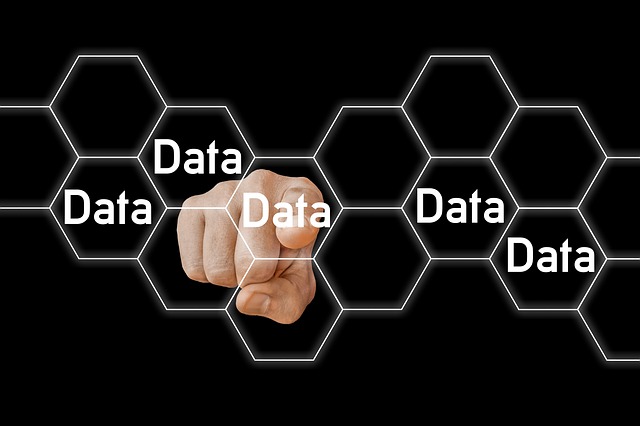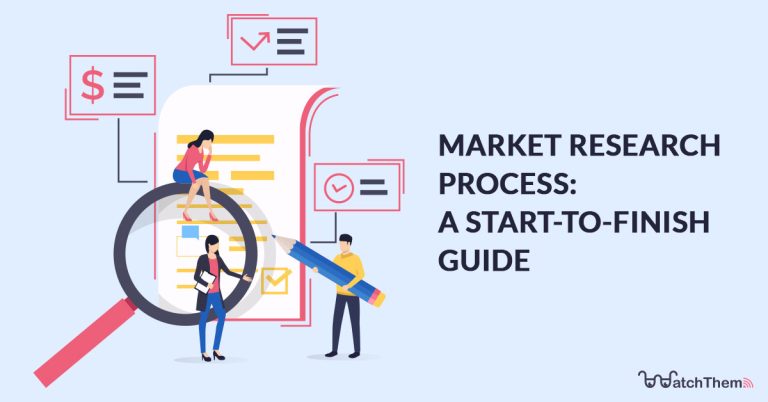Page Contents
If you are a marketer or want to become one, you should know that researching is the most important part of your job. It’s surprising, but many people tend to skip the market research process. Without researching and gathering data, you won’t be able to beat the competition and make a profit. So start your research and path to success right now by reading this ultimate guide.
The market research process can take different forms, and it comes to the rescue when you need to gather information about the business you work in, customers, and products. With market research data, you will be able to find the latest trends and information about customers, such as their needs, expectations, and their psychographic segmentations. Also, you can keep a close eye on your competitors and find out about their market share, pricing, and products.
Now you must be thinking “how can I gather this data?!” Worry not because your solution is in our hands!
WatchThemLive is a marketing analytics tool that collects all kinds of data about customers. With its exceptional features such as session replays, heatmaps, and visitor tracking, it enables you to find visitors’ behaviors, likes, dislikes, country, and lots of other useful information. With WatchThemLive, prove to yourself that you can be better than your competitors. Subscribe now!
In this article, you’re going to learn the definition of marketing research, the steps of the marketing research process, and its importance. Stay with me to find the best ways to start your online market research process.
What Is Marketing Research Process?


In a nutshell, market research is a systematic methodology that guides you with decision-making. It determines whether your new product or new service is good enough to launch or still needs some modifications based on research conducted directly on potential customers.
With market research, you can find and build your target market and get feedback from customers about your new product or service.
Companies or expert third-party organizations can collect this type of data. It is also possible to gather market research data through surveys, focus groups, or product testing.
Why Is Marketing Research Important?
The importance of marketing research lies within the information it gives you. With marketing research, you can compare yourself with competitors as well as get information about them, understand how you look in the target customers’ eyes, how to connect with them, and forecast your production and sales. Also, as we said before, it guides you with the process of making a new product and marketing it to customers.
Market Research Process Steps


Here are 6 market research steps that enable you to collect the data you need to make informed decisions.
1. Define the Problem
The first step in the marketing research process is defining the problem. Obviously, you’re facing a problem. That’s why you’re researching: to find a solution for it.
In this step, you need clear objectives, some background information, the purpose of the study, and the questions you’re going to ask your participants.
Let’s say you recently launched a new item, but it’s not selling well compared to your other products. The problem you’re facing here is why this item is not selling.
Keep in mind that identifying research problems will give you the answer to “why” things happened. It won’t give you how-to-fix-it answers. So, you have to take some other steps before you can find the solution.
2. Choose Your Research Design
There are 3 types of research design based on how much information you have about the problem:
1. Exploratory Research
You need exploratory research when you don’t have much information about the problem. This type of research is used when you have a general idea of a problem or a specific question. It often gives you qualitative data, but if you’re studying a large group of people, you can also have quantitative data. Some ways to collect exploratory data are case studies, focus groups, or interviews such as face-to-face interviews or telephone interviews.
2. Descriptive Research
Researchers use descriptive data when they have some information about the problem. Descriptive data is a part of quantitative data that describes the characteristics of the problem or phenomenon. It gives you the answer to the “what” rather than the “why” of the problem. You can use one or several data collection methods such as observations, surveys, case studies, and interviews.
3. Casual Research
You can use casual research when you want to define the cause and effect relationship between variables. The data is gathered through a random sample by questionaries, tests, and interviews, but the most common way is by observation.
3. Develop Your Research Method


Now that you’ve chosen your research design, you have to look for a method to run it. In this step, you have to choose the research method that will produce the accurate data you need to solve the identified problem.
Your research method is a framework that includes hypotheses, your question, and samples.
You need to research your samples: Who are you going to ask questions from? How are you going to reach them? How many people will you be asking?
Keep in mind that your sample should be representative. This means it should reflect the larger group you’re studying.
In this process, you’re going to work with the manager and the experts in your field, gather secondary data, and conduct qualitative and quantitative research to help with the decision-making.
4. Collect Data
There are two types of data to gather: Primary data and secondary data.
Primary data is the data we gather through research, and secondary data is what already exists and is collected by the company, or through the internet, social media, etc.
The best way to collect data is to use multiple methods rather than just one. For example, operational data shows information about the company’s costs, sales, and customers. experimental data shows the thoughts, emotions, and behavior of the people involved such as employees and customers. If you mix these two you will get the best results.
You need a tool to collect data in this step, such as website heatmaps. WatchThemLive is an excellent analytics tool that will give you analyzed quantitative data such as age, country, sex, etc. It also gives you qualitative data by analyzing customers’ behavior using session replays and heatmaps.
Sign up to WatchThemLive now and end your struggle!
5. Analyze the Data
All the steps we took were to reach this station. If you executed all the steps accurately, then you’re going to find a solution. You should know that collecting data alone won’t solve your problem, so be prepared to interpret it. There are tools like Excel or SPSS to analyze the data for you.
In this step, you’re going to find out which pieces of information are wrong and set them aside, and whether your hypothesis was right or wrong. You can also find major trends and patterns in the data, the reason for their existence, and the solution to your problem in this step.
6. Visualize, Report, Take Action
Finally, in the last step, you’re going to report your findings. This includes addressing the issue in step one, restating the questions, and giving your answers. Your findings might consist of answers to questions such as:
- Why do customers bounce?
- What problems does our product have?
- How can we improve our marketing effectiveness and grow our business?
Your report should have explanations as well as charts and tables to explain everything thoroughly. Keep in mind that in the final step, you should have the answer to your primary question. Otherwise, you must have done it all wrong.
Conclusion
All the steps we explained here are necessary in order to find what you need. Throughout the marketing research process, you will find not only the answer to your specific question but also some other valuable data. You should know that this process needs to be iterative in order for it to result in better outcomes.
In this article, we explained what the marketing research process is, why it’s important, and its six steps. We also introduced tools you need for different types of research design and methods.
Hope you find it helpful 🙂
If you’re looking for a tool with great features to conduct analyzed qualitative and quantitative data, WatchThemLive is the best you could ask for it. Don’t waste your time trying useless ways. Sign up here and see for yourself!


